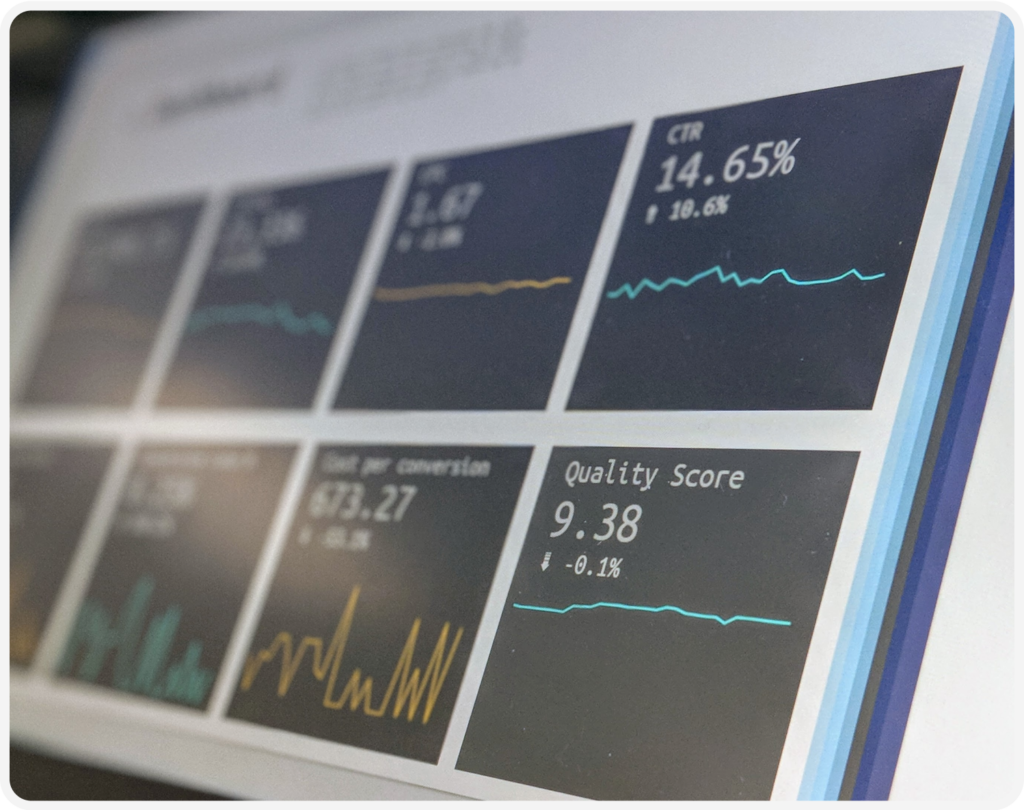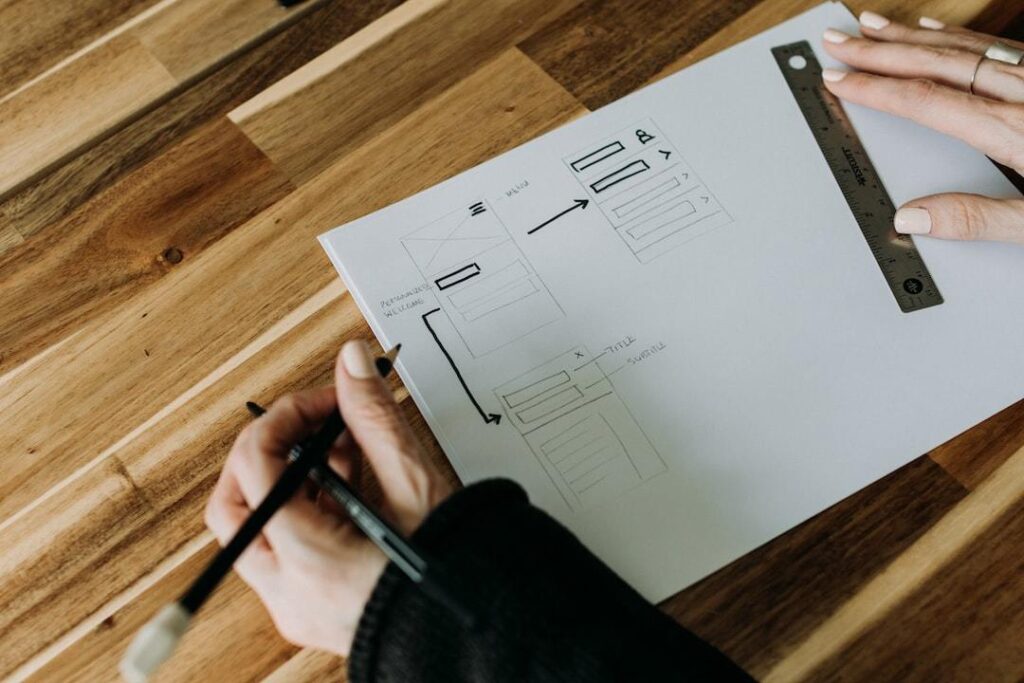Picture this: you’re designing a groundbreaking new product, and the success of your startup hinges on its user experience. Enter UX Design Flows.
The intricacies of these flows can make or break the intuitiveness and overall appeal of your product. Fear not – we’ll delve into the complexities of UX Design Flows to create an intuitive user interface that drives users back.
From understanding user flows and task flows to choosing the right tools for collaboration, we’ve got it all covered. You’ll also learn how to make data-driven design decisions by analyzing quantitative data and gathering qualitative insights from interviews or surveys.
Finally, witness a case study involving scrambled eggs (yes, really) as we demonstrate how to analyze different starting points for users while identifying potential pain points during meal preparation.
Dive into our comprehensive guide on UX Design Flows and transform your product’s user experience into something truly extraordinary!
Table of Contents:
- Understanding User Flows: The Key to a Smooth UX Journey
- The Importance of Task Flows
- Tools & Techniques for Creating Effective Flows
- Data-driven Design Decisions
- Integrating User Flow & Task Flow Analysis in UX Design Process
- Case Study: Scrambled Eggs Example
- FAQs in Relation to Ux Design Flows
- Conclusion
Understanding User Flows: The Key to a Smooth UX Journey
Let’s talk user flows, shall we?
User flows are all about the journey your users take while navigating through your app or website.
Their main goal is to ensure that the design caters to users’ needs and objectives while considering various decision points based on their interactions.
User flow analysis helps designers create seamless experiences for their audience by identifying potential roadblocks and improving overall usability.
Defining Starting and Ending Points in User Flows
To kick things off, you need to define where your user’s journey begins and ends within your app or website.
This can vary depending on factors such as user goals, demographics, or even device type (mobile vs. desktop).
By pinpointing these crucial moments in the experience, you’ll be better equipped to guide users towards achieving their desired outcomes with ease.
Identifying Key Decision Points for Users
Next up: decision points.
In any given interaction with an app or website, there will be multiple paths a user could potentially follow based on their choices along the way.
- Action:
- A click of a button,
- a swipe of a screen,
- a tap of an icon – each action leads them down different routes towards accomplishing specific tasks.
- Decision Points:
- These are the moments where users must decide which path to take.
- Analyzing these decision points can help designers identify potential pain points and optimize user flows for a more intuitive experience.
So, there you have it.
A quick yet insightful look into understanding user flows and how they contribute to creating delightful experiences for your target audience.
Delve into this subject further and you’ll be on your path to honing the craft of UX design that encourages users to return.
The Importance of Task Flows
Let’s talk task flows, shall we?
Envision yourself attempting to accomplish a particular job inside an application or website.
You’d want the process to be as smooth and efficient as possible, right?
That’s where task flows come into play.
A well-designed task flow breaks down complex tasks into detailed step-by-step sequences that are easy for users to follow.
Simplifying Complex Tasks with Task Flow Analysis
The beauty of task flow analysis is its ability to simplify even the most intricate processes.
This helps designers identify areas where improvements can be made, ensuring each action is clear and straightforward for users.
Identifying Potential Bottlenecks in Processes
Nobody likes getting stuck in traffic – especially when it comes to using apps or websites.
, those pesky obstacles hindering user progress, need addressing ASAP. –
- Analyze your current design: Where do users get stuck? What slows them down?
- Create solutions: How can you streamline their experience? Can certain steps be eliminated or combined?
- Evaluate & iterate: Test your new design with real users. Keep refining until you’ve got it just right.
By focusing on single tasks through comprehensive task flow analysis, UX/UI designers ensure seamless experiences that keep users coming back for more. So go ahead – dive deep into those task flows and make sure they’re optimized for your users’ needs. After all, a happy user is a loyal user.
Ready to learn more about UX design flows?
Check out our in-depth guide on understanding and integrating user flows & task flows.
Tools & Techniques for Creating Effective Flows
Alright, let’s dive in.
To create user and task flows like a pro, you need the right tools and techniques.
But don’t worry; we’ve got your back with some amazing recommendations.
Choosing the Right Tool Based on Project Requirements
The first step is selecting the best tool that fits your project needs.
If you’re into traditional methods, pen-and-paper sketches work wonders for brainstorming ideas quickly.
For digital artists or designers who prefer working on tablets, Procreate is an excellent iPad drawing app to consider.
Collaborating with Product Teams Using Shared Tools
Moving on to collaborative tools – these are essential when working closely with product teams.
Miro, a versatile digital whiteboard platform, allows real-time collaboration between team members across various locations.
- Bonus: Miro integrates seamlessly with popular apps like Slack and Google Drive.
- Digital Whiteboards: Whimsical – A fantastic alternative if you want something more focused on flowcharts and wireframes. It is super intuitive too.
- All-in-One Design Software: Figma – For those who prefer an all-in-one solution, Figma offers powerful design tools and real-time collaboration features. A designer’s vision is made reality with Figma.
Now that you’re equipped with the right tools leta’s talk about techniques for creating effective flows.
Remember to always keep your users in mind when designing user and task flows – empathize with their needs, goals, and behaviors.
Iterate on your designs by incorporating feedback from usability testing sessions or customer surveys to ensure smooth navigation through your app or website.
Eager for more insights? Check out Design Match for expert guidance tailored to impact startups like yours.
Data-driven Design Decisions
Designing user and task flows that truly resonate with your target audience requires a deep understanding of their goals, needs, and behaviors.
Utilizing data is advantageous.
Examining both numerical and qualitative information can facilitate informed decisions throughout the design process.

Analyzing Quantitative Data (e.g., Analytics)
Dive into those metrics.
Website analytics tools, such as Google Analytics or Mixpanel, can provide valuable insights about how users interact with your app or website.
You’ll uncover information like most visited pages, bounce rates, conversion rates, and more – all crucial for optimizing user flows.
Gathering Qualitative Insights from Interviews or Surveys
Uncovering the full narrative requires a more intimate approach.
Glean qualitative insights from user interviews and surveys to gain a more personal understanding of your audience’s experience with your product or service.
- Create open-ended questions that encourage detailed responses;
- Aim for a diverse group of participants;
- List key takeaways after each session to identify patterns;
The combination of these insights will enable you to create more effective user flows tailored specifically for your audience’s preferences.
Bonus tip: Don’t forget usability testing sessions. They’re an excellent way to observe users interacting with your design in real-time, allowing you to identify potential pain points and areas for improvement.
Remember, data-driven design decisions lead to better user experiences – so embrace the numbers and let them guide your creative process.
Ready to dive deeper into UX/UI design? Check out Design Match for expert guidance on finding the perfect designer for your impact startup.
Integrating User Flow & Task Flow Analysis in UX Design Process
Alright, let’s dive into the nitty-gritty of combining user flows and task flows.
Remember, these two elements are like peanut butter and jelly – they need each other to create a delightful experience for your users.
Step #1: Start by mapping out both user flow and task flow, keeping in mind their unique characteristics.
Step #2: Look for areas where they intersect or complement one another. This will help guarantee that the design is unified and continuous.
, anyone?
Step #3:: Conduct regular design iterations. As you make changes based on data-driven insights, be sure to update both types of flows accordingly.
This way, you’ll maintain harmony between them as your product evolves over time.
- Analyze how users interact with your app or website during usability testing sessions. Observe their behavior closely while completing tasks within the context of different user scenarios.
- Gather feedback from customers via surveys or interviews about what works well (and not so well) when using your product.
- Evaluate any quantitative data available through analytics tools such as Google Analytics or Mixpanel.
FAQs in Relation to Ux Design Flows
What are flows in UX design?
Flows in UX design refer to the series of steps users take to complete a specific task or achieve a goal within an application or website. They help designers understand user behavior, identify potential pain points, and optimize the overall experience. There are two main types: user flows and task flows.
What makes a good UX flow?
A good UX flow is clear, efficient, and intuitive for users. It should minimize complexity by breaking tasks into manageable steps while maintaining consistency across interfaces. Additionally, it should provide appropriate feedback and guidance throughout the process to ensure users can easily navigate and complete their desired actions.
What is task flow in UX design example?
Task flow refers to the sequence of actions required for completing a specific task within an application or website. For example, consider an online shopping app where the user’s goal is purchasing an item; this would involve browsing products, adding items to cart, entering shipping information, selecting payment method, reviewing order details before submitting.
How do I create a user flow in UX design?
To create a user flow in UX design:
- Define your target audience
- List key goals/tasks they need to accomplish
- Create personas representing different segments of your audience
- Determine starting & ending points for each scenario/task
- Ideate possible paths through wireframes/sketches
- Analyze data (analytics/interviews) & iterate on designs accordingly
Conclusion
UX design flows are a crucial aspect of creating user-friendly products. By understanding the starting and ending points in user flows, identifying key decision points for users, simplifying complex tasks with task flow analysis, and integrating data-driven design decisions into the process, designers can create effective and efficient experiences for their users.
In this post, we have covered various tools and techniques that can help you create effective UX design flows. We have also provided a case study on scrambled eggs to illustrate how to analyze different starting and ending points for users while identifying potential pain points during meal preparation.
If you are looking to streamline your UX design process or need help finding the right designer for your project, Design Match can connect you with top-tier designers who specialize in creating intuitive user experiences. Contact us today to learn more!
